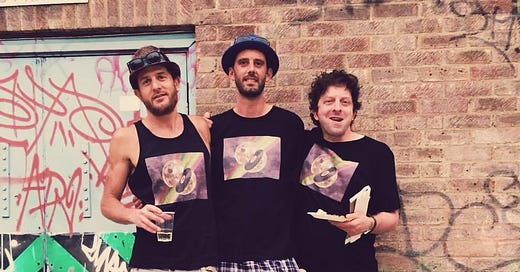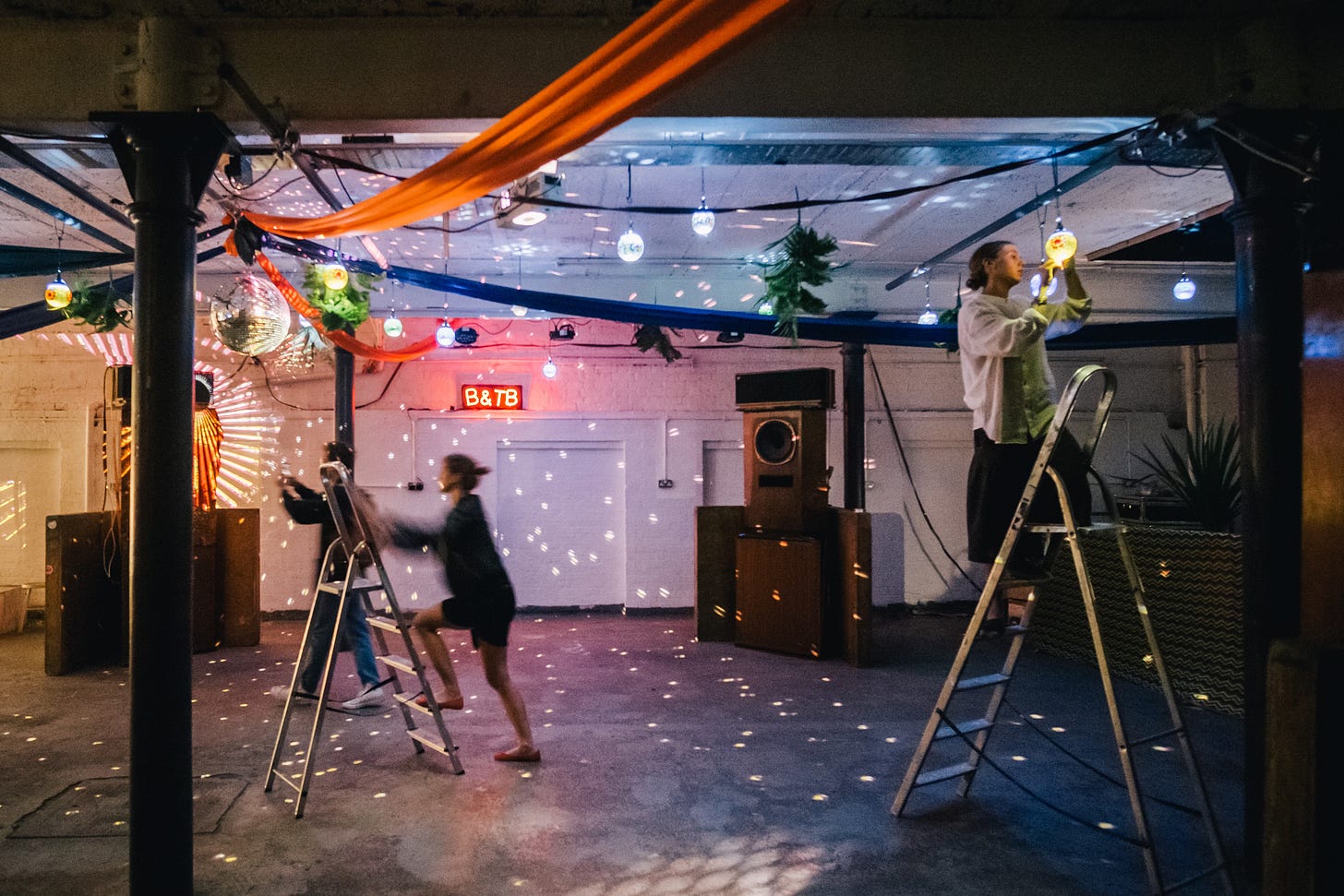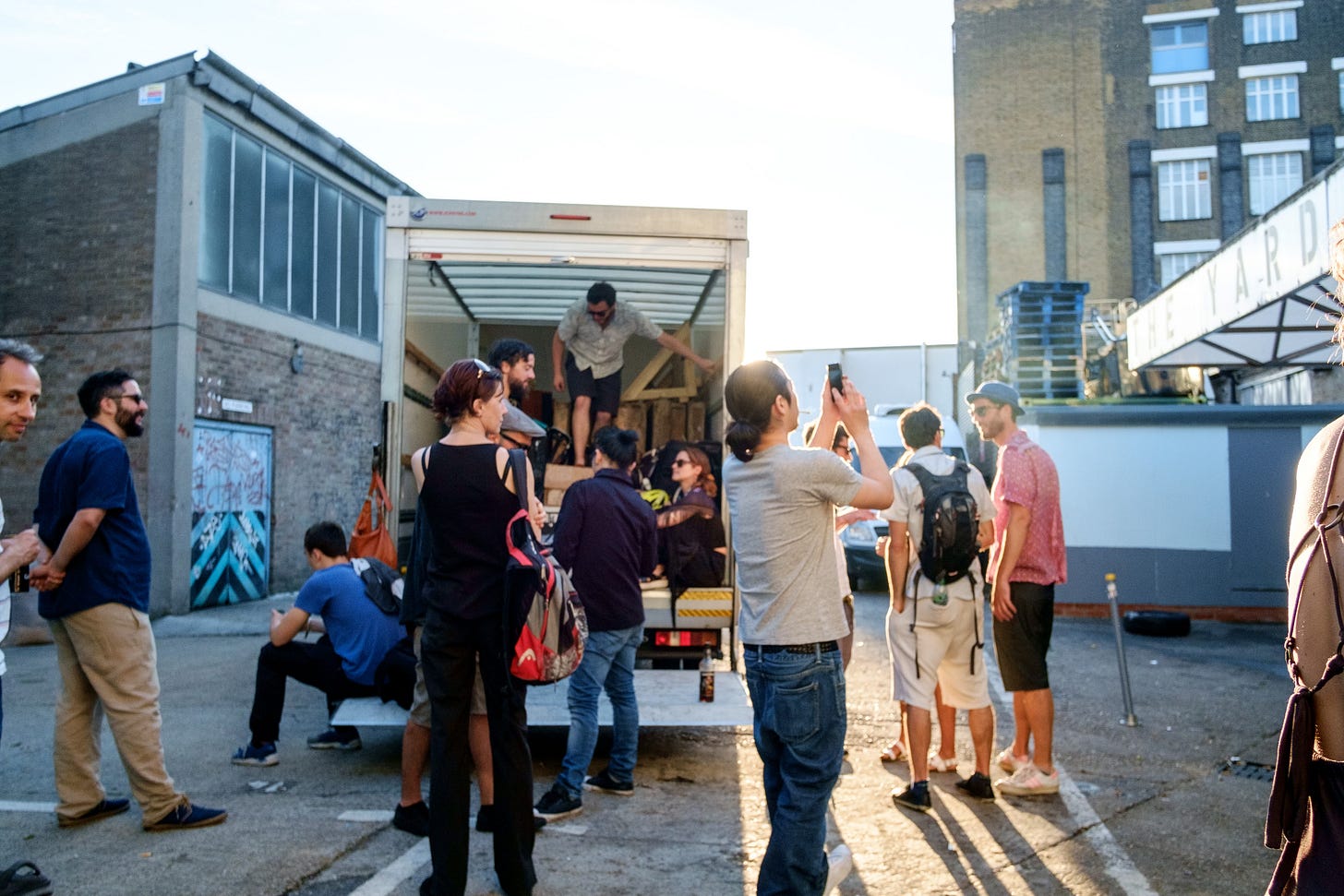The Origins & Philosophy of Beauty and the Beat (Part 1/3)
As BATB approaches its 20th anniversary in June, founders Jeremy Gilbert, Cyril Cornet and Cedric Woo reflect on the origins, philosophy, and enduring passion that keep them behind the decks.
Since 2005, Beauty and the Beat (BATB) has redefined the dance party experience by blending deep, psychedelic dance music with high-fidelity sound and fostering an inclusive, open-minded atmosphere. Inspired by iconic spaces like The Loft and Plastic People, BATB operates like a house party on a club scale.
For nearly two decades, the crew has brought and installed their full hi-fi system from scratch into a series of evolving East London venues—transforming each space into a deeply immersive, physically felt listening environment. Unlike many of its contemporaries, BATB has never burned out or faded away—it has grown slowly and organically, influencing DJs, labels, and party collectives from Paris to Lisbon to Sheffield.
Introduction
Jeremy: I’m Jeremy Gilbert, one of the founders of Beauty and the Beat. By day, I’m an academic writing and teaching about politics, culture, and music. I always say, "I’m not a DJ, I’m a selector." That distinction is important to me because I only play within the context of a sound system. I was involved in setting up the Lucky Cloud sound system when we started bringing David Mancuso to London, and Beauty and the Beat evolved from that. DJing today often implies working with digital files on a screen, which isn’t what I do.
Cyril: I’m Cyril, part of the core team and a founder of the party. I also help run our label side and work in sports education.
Cedric: Hi, I’m Cedric, the third member of Beauty and the Beat. I’m one of its musical hosts, a DJ, an occasional music curator, and a full-time music digger. I also coach swimming and triathlon. Sport has always been part of who I am—I studied sports science, and Cyril and I went to the same university in the late ‘90s.
I had a decade of intense triathlon racing before stopping a few years ago. I need to run, like I need to breathe, like I need water and rum sometimes. It’s just part of me.
What is Beauty and the Beat?
Jeremy: I describe it as a dance party. The term we’ve often used is ‘deep psychedelic dance music.’ We play music from a broad range of times and places, but I always reject the word ‘eclectic’ because that suggests randomness. In reality, there’s a deep aesthetic logic to what we play—there’s a consistency, an energy, a feeling that ties it all together. We know whether a record is a Beauty and the Beat record when we hear it, even if it comes from a completely different genre or era.
Much of the music at BATB is rooted in what I call an Afro-psychedelic tradition—a fusion of psychedelic culture and the rhythms of the African diaspora, including Brazilian, Caribbean, and jazz influences. But even that definition is too limiting. Many of the artists we play wouldn’t describe themselves as psychedelic, the term is more of a catch-all for music that has uplifting energy, complexity, and a certain atmosphere that links a lot of what we play together.
Cyril: I see it as a house party on a club scale. Obviously, there’s a massive emphasis on the quality of the sound system. We’ve built that system over the years, and we’re still working on it. The New York Loft parties were a major influence, but we also drew inspiration from Plastic People, Notting Hill Carnival, and beyond. Originally, we started throwing house parties, and as the community grew, it became necessary to find a bigger venue.
Cedric: To me, the easiest way to describe it is as an extended house party, because that’s how we all met. We were all going to each other’s house parties, and then we bonded and thought, "Why not make a bigger one?" That was the source. Cyril and I were actually living together for a few years at the start.
Jeremy, I think we met at Lucky Cloud. We had the sound system, we had a similar vibe, we had the vehicles, and we already had a crowd even before the first party.
Jeremy: Yeah, we were really committed. We saw the house party as an art form in itself. And in some ways, it was a practical necessity—we couldn’t fit any more people in our houses, and the neighbors were getting really unhappy. So, we had to take it somewhere bigger.
What are the key ingredients?
Cedric: The sound, the people, and the music—though not necessarily in that order. First, having a strong crew and a good community is essential. You need the right people to make things happen. Creating a magical atmosphere attracts the right crowd. The set and setting of the party are incredibly important, especially for an event where people might have a psychedelic experience.
A well-decorated room, designed with love and care, makes a huge difference. We always have a buffet with fruit and nibbles and, ideally, a chill-out area away from the dance floor. These little details help people feel welcome and comfortable, and that energy shapes the entire party. If people feel good as soon as they walk in, if they feel a warm welcome at the door, chances are they’ll have an amazing night.
A huge shout-out to the Beauty and the Beat family—the friends, helpers, and community members who’ve supported us over the years. The crew is constantly evolving, but that sense of community remains at the core. The people carrying speakers, setting up the sound system, and decorating the space—they’re the ones who create the magic.
And then, of course, there’s the sound.
How important is sound to your party?
Cedric: It’s crucial. From the very beginning, it was one of the main reasons we started. We were all involved in Lucky Cloud, and Plastic People was like a church for us—it had an incredible sound system. I had been to The Loft in New York, too, and once you hear a great sound, you can’t go back.
Sound has always been one of the pillars of Beauty and the Beat. We started with just one pair of Klipschorn speakers and built our system over the years—now we’re up to seven stacks of Klipschorns and constantly improving the system step by step.

Jeremy: The Loft was a major influence in this. The Klipschorn is still a unique speaker—it’s one of the few that has remained unchanged for decades. It has incredibly high sensitivity and doesn’t cost a fortune compared to most high-end audiophile speakers. Many speakers require ridiculously powerful amps, but the Klipschorn can fill a room with sound using relatively low power. That flexibility allows us to use even fairly modest hi-fi amps and still get an amazing sound.
Plastic People was also a huge inspiration. Before that, sound quality just wasn’t a priority in London clubs. Most people running raves only cared about volume and heavy bass—there was this crude interpretation of the dub reggae aesthetic that said, "Just make the bass as heavy as possible." The result? You’d go to clubs in the ‘90s and hear Detroit techno records where all you got was a muddy boom-boom sound, with no melody or treble at all. But at Plastic People, they actually made an effort to get good sound.
When they moved to Shoreditch, they installed what was, at the time, considered a high-quality club system. It wasn’t quite an audiophile setup, but it was designed to sound great. You’d walk in, and if someone played a Detroit techno record, it actually sounded the way it was supposed to. It was a revelation.
There were also people in Glasgow, like Andrew Pirie and others, who were pushing for high-quality sound in clubs. So while The Loft was a major influence, the idea of prioritizing sound wasn’t exclusive to it. For me personally, one of the main reasons I threw house parties was to avoid hearing music on bad club sound systems. Then I got to know David Mancuso, and he taught me a lot about audio.
So yeah, The Loft was important, but Plastic People was equally inspiring—it encouraged us to move beyond the narrow musical selection that dominated British clubs at the time.
Next we go deeper into the clubs that shaped BATB, and how they craft the perfect dance floor energy. Most of photographs in this posts are taken by Miguel Echeverria.



















